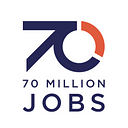Conversation Mapping
The keys to a successful job interview
By Torin Ellis, Contributing writer
May 8, 2018
We all know former inmates often face enormous challenges finding work after they’ve been released. So, when you do finally land an interview with an employer your conversation has to be airtight. Meaning, the more convincing you are, and the more supportive examples you can provide, the more favorable a position you’ll be in. You’ll be even better off if you understand conversation mapping.
Conversation what?
Conversation mapping. Conversation mapping is another technique that clearly distinguishes a star candidate from an average candidate. Mapping is a tactic used to maintain structure in the interview setting and to help steer the interviewer(s) toward a favorable ending.
For example, when I am interviewing a potential new client, I structure my questions specifically to target the needs of the business, mission and pain points. I ask questions that are relevant to achieving the desired result of increased efficiency and productivity while decreasing pain. On the interviewee side, it would look like structuring your answers towards your achievements and abilities.
Make sense? (leave a comment/note/question below)
When more than one candidate is applying for the same job, (as is almost always the case) you should arrive with an array of introduction options, transition statements, and questions to ask once the power shift takes place.
This allows you to mirror the attitude of the interviewing lead and set the tone for positive interactions with all people involved, including the assistant or receptionist. Which reminds me, be courteous to EVERYONE within ten feet of you once you hit the parking lot.
Star candidates own the conversation process and are able to authoritatively deliver a positive or negative response. The priority should always be to add depth in short bursts in order to make the conversation interesting.
Three tips that have proven effective over the years:
- Arrive with five (5) thoughtful questions that clearly uncover the job responsibilities, evaluation process and the qualities desired in hiring a new person.
- While in the building/office, mention the subtleties (awards, artwork, monitors, office energy). Those mentions of the environment help you to connect.
- Be honest and transparent, but not careless. Refrain from bad mouthing your past/present employer — no matter what. Practice transitions that avoid (potential) sticky questions.
Don’t overlook the preparation. Don’t think to yourself “well it’s just a janitor job, I don’t have to prepare.” Whether it is for a part-time job, a full-time job or your dream job, you’ve got to prepare. Trust me it matters. Try role playing — stand in the mirror and practice responding to questions. If you’re not sure where to begin, you can start here: top 5 most commonly asked interview questions.
If you know your situation is questionable (no job in years, too many jobs in years, poor relationships with past supervisors, chaos where you live) practice conversation mapping for 30–45 minutes per day.
And remember, when employers throw curves, they are feeling you out to see if you have the temperament and tools (communication, discipline, teamwork, will) to push through. Keep these things in mind, and you’re sure to nail your next interview.
Diversity Maverick and Strategist // SiriusXM Contributor // Published of Rip The Resume — Creative, high voltage, ready to pursue results.
#author #dmv #baltimore #torinellis #siliconvalley #wallstreet #strategist #toprecruiter #diversityambassador #diversity #karenhunter #siriusxm
